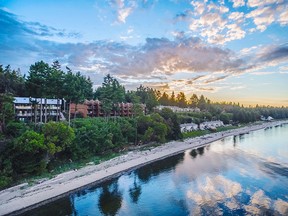Article content “Keep your hands to yourself!” cries Oscar, as we descend deep inside Horne Lake Caves, a 30-minute drive from Parksville on Vancouver Island. “One pinkie can destroy hundreds of years of growth.” High above hang giant icicle-shaped stalactites in Riverbend Cave, and to the right there are waterfalls of calcite (we even climb up to see a marshmallow-like chunk that strikingly resembles a Buddha shape).
It’s all part of a mesmerizing underground cathedral with minerals glittering under the lights on our helmets. We’re teetering on the uneven, occasionally slippery rocks, thanks to the “three-points-of-contact-at-all-time” and “be-slow-to-be- smooth, go-slow-to-go-fast” mantras from our instructor. Our group — a couple from Toronto and a family up for the day from Victoria— navigates the narrow damp passages and giant boulders cantilevering into the 554-metre-long cave.

We wind our way further down past more fossils and other crystalline formations encountering the three stages of caving. Beyond the “entrance” and “twilight” parts of a cave—where the sunlight can still seep in—we emerge into the final one. Finding rocks to sit on and switching off our lights, we are now in the dark zone, utter darkness.
After decades exploring above ground on the island, it’s thrilling to be subterranean. It opens up a whole new playground. After all, as home to some 1,500 surveyed caves, it’s little wonder Vancouver Island is touted as th.
















